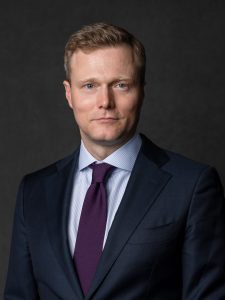Arms racing under nuclear tripolarity: Evidence for an action-reaction cycle?
FORWARD DEFENSE
ISSUE BRIEF
Conventional wisdom suggests that the world is approaching a tripolar arms race among the United States, Russia, and China. As Russia attempts to dramatically revise the post-Cold War security environment in Europe, China is expected to increase its nuclear arsenal to at least 1,500 warheads by 2035. In 2021, the then-commander of US Strategic Command, Admiral Richard, laid out the challenge of nuclear tripolarity before Congress testifying that: “for the first time in our history, the nation is on a trajectory to face two nuclear-capable, strategic peer adversaries at the same time.”
In this issue brief, the Scowcroft Center’s Matthew Kroenig challenges the evidence for action-reaction arms races in the post-Cold War period but warns we may be facing one in this new tripolar nuclear environment.
Action-reaction arms races are usually unlikely to occur
The theory behind action-reaction arms races is grounded in the “spiral model,” in which countries build their own weapons to protect themselves against the military forces of their rivals. But the spiral model suggests that countries will seek security by matching their adversaries in nuclear weapons warhead for warhead—empirical evidence does not match this claim. The United States, for example, does not try to match Russia’s nonstrategic arsenal, and China was content with a minimum deterrent for many decades. Countries, therefore, can be motivated by other drivers and sometimes expand—or do not expand—nuclear arsenals for financial, bureaucratic, or political reasons.
Action-reaction arms races have been absent in the post-Cold War period
Action-reaction arms races have not occurred in the post-Cold War period. In fact, the last twenty years have shown very little evidence for arms racing in the nuclear modernization of the United States and Russia, and the specific systems which China is developing do not comport with a desire to respond to US nuclear forces. Therefore, all three states have taken on their recent modernizations and buildups largely for other reasons.
Coming nuclear tripolarity may drive an action-reaction arms race
The author finds that there is a possibility of such an arms race only in strategic forces and much less of a prospect for an arms race in theater nuclear forces. US nuclear strategy does not aim to match Russia and China warhead for warhead in theater nuclear weapons, but, as China and Russia build their strategic nuclear forces, the United States must decide how to respond to this problem. It is not a foregone conclusion that Russia and China would react to an increase in US strategic forces with their own buildups, however, making an arms race possible but not inevitable.
Key recommendations
The report advances a number of recommendations to understand and respond to the future nuclear dynamics among the United States, Russia, and China in the 2020s and 2030s.
- The motivation behind China’s nuclear buildup is a key variable in assessing the possibility of a future arms race. This should be a key priority for US intelligence agencies.
- An increase in the number of US nonstrategic nuclear weapons is unlikely to touch off an action-reaction arms race. The United States should continue to develop the nuclear-armed sea-launched cruise missile and consider other theater-range nuclear weapons.
- The United States should maintain its current nuclear strategy, including those elements related to targeting and force-sizing. It is not a foregone conclusion that Russia and China would respond to a US nuclear arms buildup. However, if they did, the United States would be better off dealing with the consequences of a nuclear arms race than accepting the risks of deterrence failure.
About the author

Forward Defense, housed within the Scowcroft Center for Strategy and Security, generates ideas and connects stakeholders in the defense ecosystem to promote an enduring military advantage for the United States, its allies, and partners. Our work identifies the defense strategies, capabilities, and resources the United States needs to deter and, if necessary, prevail in future conflict.
